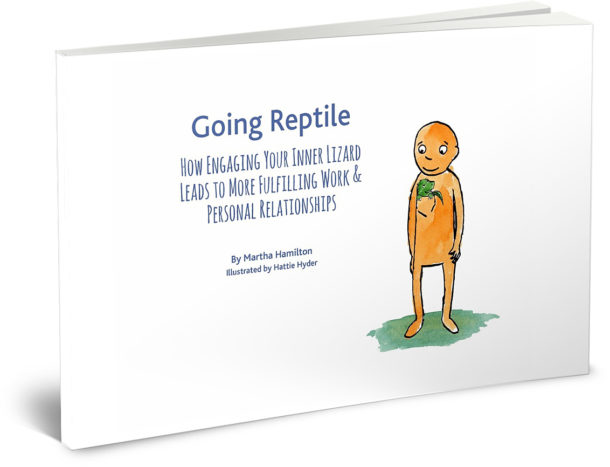We’ve been looking at how we tend to navigate stressful situations and environments (VUCA: Volatility, Uncertainty, Complexity, and Ambiguity) by “Going Reptile.” (If you’re just joining the series, you may want to go back to the beginning and read the introduction.) The reptilian responses are safety strategies (Fight-or-flight) that have been hard-wired into us by thousands of years of evolution, but that override our higher level human capacities and cause trouble in our personal and professional relationships.
I’ve broken down these response styles into four main categories – the Four F’s: Fight, Flight, Freeze and Fawn. Today, we’re finishing up our exploration of the Fight styles with an overview of one particular way in which this style shows up: The Politico.
 The Politico is one of my favorite strategies, because it is so colorful. And, it is a difficult strategy to with – whether it is your strategy or someone else’s. The nuances of this strategy are what define it. The person who employs this strategy in order to stay safe is simultaneously schmoozing others and working hard to get what they want. The safety comes from getting what they want. The schmoozing is the vehicle they use to get there.
The Politico is one of my favorite strategies, because it is so colorful. And, it is a difficult strategy to with – whether it is your strategy or someone else’s. The nuances of this strategy are what define it. The person who employs this strategy in order to stay safe is simultaneously schmoozing others and working hard to get what they want. The safety comes from getting what they want. The schmoozing is the vehicle they use to get there.
Indicators: Shiny polished exterior, thinly veiled contempt, making nice, but if this style doesn’t get what it wants, watch out!
This style often comes wrapped in a very engaging, affable and intriguing well-polished exterior. When encountering someone with this style, you may not be sure whether what you see is what you get. But because they are so affable, you may well assume the best, and then later become surprised by their behavior. Sometimes serially surprised.
This well-crafted safety style was honed over years of practice, starting in childhood when the budding Politico learned ways to get what they needed. Sometimes family systems need the children to appreciate and find nourishment through what they have to offer, regardless of whether it aligns with the needs of the child. This inadvertently encourages a kind of subterfuge, and the child creatively finds a way to belong by appearing to be aligned with the family, while actively working to get what they need, personally. For some people this behavior is so familiar that it feels “normal.” And it is for some. Everyone has style. And different people have different styles.
Styles work well as children. When we developed them, they were brilliant. As adults they also can work well until we need access to the full capacity of our pre-frontal cortex. In a stressful or VUCA context (volatile, uncertain, complex and ambiguous) our styles kick in. As we become more reactive, more deeply entrenched in our style, our safety strategy, our access to our pre-frontal cortex is diminished, as are all the capacities that reside there.
Often, we employ our style more and more aggressively in an attempt to redirect what is happening around us. As we get more entrenched, our capacity diminishes further.
The good news is that this is not an immoveable state. Recent psycho-neurobiology provides a lot of information and, frankly, hope. There are a few steps you can take to begin to see what is happening and to learn more.
Observation: Get to know the reactive styles that are showing up in yourself, and those around you. This is not about blaming or shaming, this is about humble recognition. Gentle recognition is an important first step.
Understanding: Reactivity is wired into us by design – it is not a flaw. It’s a human safety feature. The question is whether reactions that supported us when we were younger still serve us now, particularly in a work or relational context.
Get and Stay connected: Shame, blame, complaining, explaining, justifying, defending and denying are indicators of disconnection – from ourselves and others. Many of us learned to disconnect as children, and these indicators – this disconnection – may seem so normal, so usual, that it is hard to see as an indicator of anything. Yet, as adults, we need the capacities that come online when we’re connected. If we need to face a VUCA environment (volatile, uncertain, complex and ambiguous) with the capacity to navigate it effectively, connection is required.
What we resist persists: If you find yourself in some form of anger around “If they would only give me what I want, this would all be so much easier…” you are in the middle of this dynamic. For some of us, this is so “business as usual” that it may be hard to recognize as a contributing factor to the very issues that you need to address.
Get to know your styles: This brings us back to observation. Compassion is central to loosening reactive styles. If you blame yourself or others for how they react, the safety styles – the reactive patterns – become more entrenched and cleverer. Their job is protection. They do it well. Practice noticing these patterns, these reactive styles of navigation. See if you can gently appreciate that they were created for really good reasons – even if they don’t seem to serve the family, team or organization in the present.
Recognition is the first step. Gentle acceptance and appreciation is the second. I’ll get into more steps in later posts.
This concludes our exploration of the 3 Fight styles (The Director, The Superior One, and The Politico). Next, we’re going to explore the Flight Styles.

